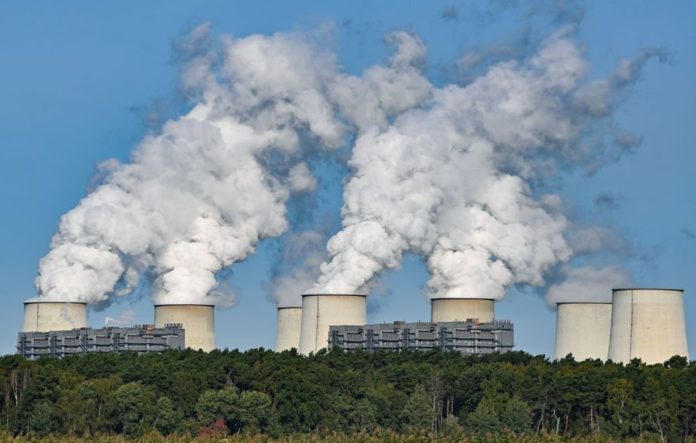This is supported by a new study from Imperial College London that was just published in Environmental Science & Technology Letters.
Official reports overestimate stored carbon by 19-30%, according to the study.
Between 1996 and 2020, they estimated that 197 million tonnes of carbon were captured and stored, which marks a substantial achievement in climate change mitigation.
But the researchers say that the reported rates of carbon capture are overstated because there aren’t any consistent ways to report them. This gives an inaccurate picture of how technology helps fight climate change.
According to the researchers, this weakens our ability to implement climate mitigation policies like those outlined in the Paris Agreement and runs the danger of concealing problems that could otherwise be easily fixed, such as inefficiencies in facility technology and transportation.
“Carbon capture and storage (CCS) is rightly a cornerstone of climate change mitigation,” says lead author Yuting Zhang, “but without a centralized reporting framework we approach climate change on the back foot when we need to be more proactively tackling the issue with robust and accurate reporting.”
Lawmakers should support a centralized reporting database that covers carbon collection, transport, and storage rates, as well as quality assurance methods such as independent auditing, according to the study.
CCS is a global project to reduce the quantity of carbon dioxide (CO2) in the environment by collecting and storing greenhouse gas at their source. In order to counteract climate change, the Intergovernmental Panel on Climate Change (IPCC) has said that CCS is essential for achieving net-zero emissions by the middle of the century.
The yearly reports and databases of thinktanks now provide the most centralized and up-to-date data on capture rates; nevertheless, these publications classify CCS activity as facility capacity rather than actual carbon stored.
In 2021, 26 operating CCS facilities were expected to have a combined worldwide capture capacity of 40 million tonnes annually.
Actual rates of capture, transit, and storage are not centralized and recorded since there is no worldwide structure to compel the reporting of specific amounts of carbon captured.
But if we want to monitor how current operations are affecting climate change mitigation, we need this data.
We may be able to understand and address any problems impacting the performance of specific CCS facilities by observing variations in the performance of industry-scale CCS plants.
“Carbon capture has the potential to significantly alter the planet’s fate, but unclear guidance means there’s no international consensus on how much has been stored so far, save for academic calculations,” adds Dr. Samuel Krevor, senior author.
“We urgently need clearly defined parameters so we know exactly where we stand.
“The nearly 200m tonnes of climate-warming carbon removed from the atmosphere is significant, but reaching this figure should not have relied on academic research.”
In order to conduct the analysis, the researchers examined the collection and storage rates of 20 of the 26 CCS plants globally recorded between 1996 and 2020 from a variety of publically available sources.
According to the related level of assurance, they divided the sources into three categories: 1) legal assurance, 2) quality assurance by auditing, and 3) no assurance.
They estimated the overall storage for the research period (1996–2020) to be 197 million tonnes, and the carbon capture rate to be 29 million tonnes of CO2 in 2019.
At this rate, underground storage stopped about half of the CO2 emissions that solar panels in the US would have stopped in 2019.
After that, they compared these numbers to those already supplied by think tanks, which are currently the most reliable source of information on CCS accomplishments and report carbon capture capability.
When reporting merely capacity, the researchers discovered that storage rates were exaggerated by 19% to 30%.
They say that requiring facilities to report actual capture rates would tell us more about how well CCS is working and put us in a much better position to deal with the climate crisis.
While project performance concerns occasionally contributed to the discrepancy between capacity and actual storage, this was not always the case.
The differences also resulted from variations in the definition of capture capacity utilized by projects and changes over time in the source of CO2.
The Department of Earth Science and Engineering at Imperial College London’s Chris Jackson, a co-author, adds: “CCS is a relatively new climate technology that is already contributing significantly to the fight against climate change. However, we show that capture capacity is not the best way to measure storage rates, and that governments should ideally enforce the use of the bottom-line metric of carbon captured.
“By and large, CCS plants are operating well and are contributing significantly to climate mitigation – but measuring their success more accurately can only help this effort.”
Consistent reporting on CCS storage performance can make it easier to model the large-scale deployment of CCS and track both the technology’s short- and long-term resource requirements.
The researchers advise that key information such as intended capture rate capacity, maximum capture rate capacity, annual CO2 capture, annual CO2 transport, annual CO2 storage, quality assurance measures like third-party auditing, and any offline periods where the CCS facility could not operate as intended should be included in reporting frameworks.
Image Credit: Getty
You were reading: Current Reported Rates Of Carbon Capture Are Overestimated – New Report
